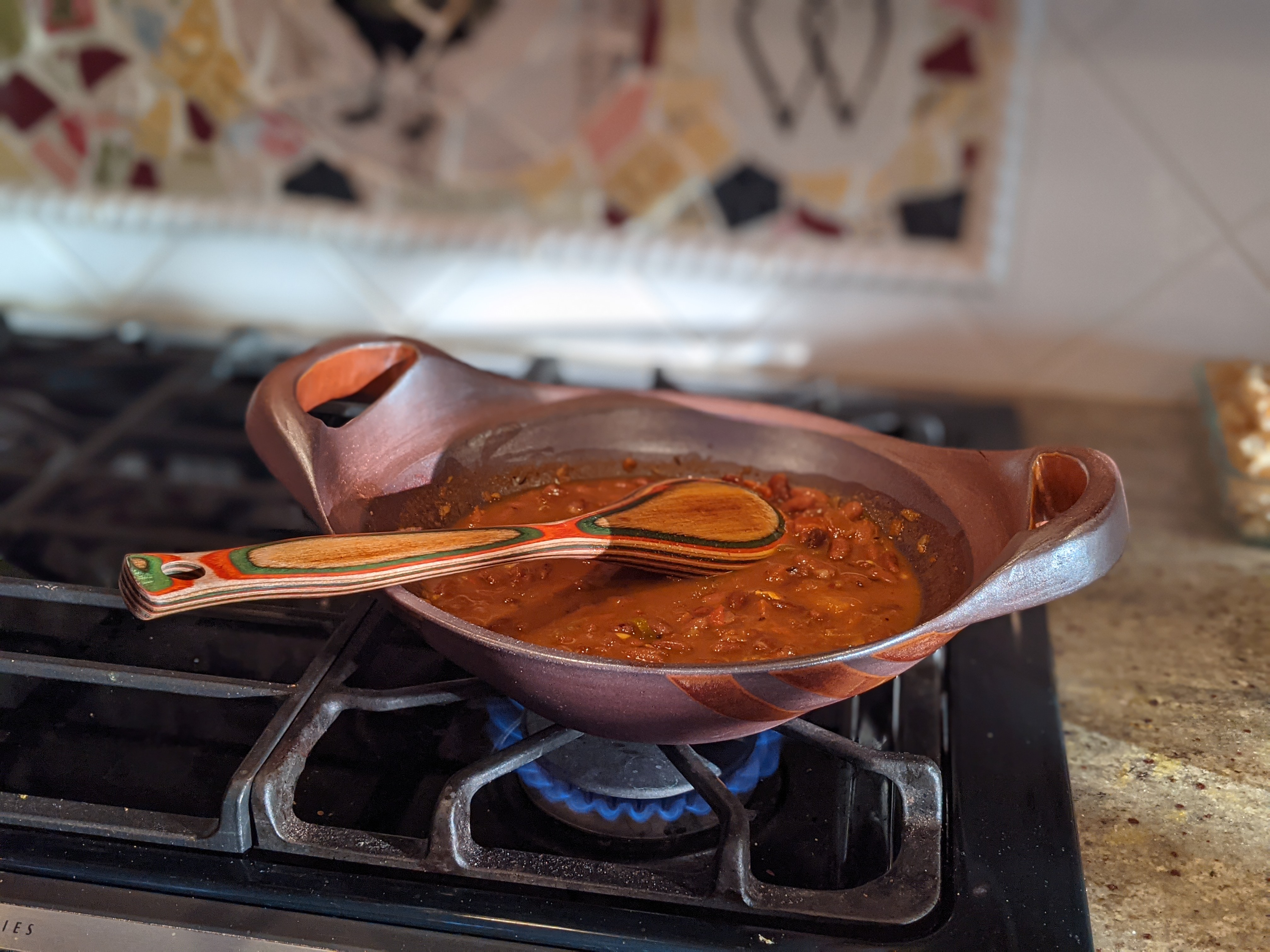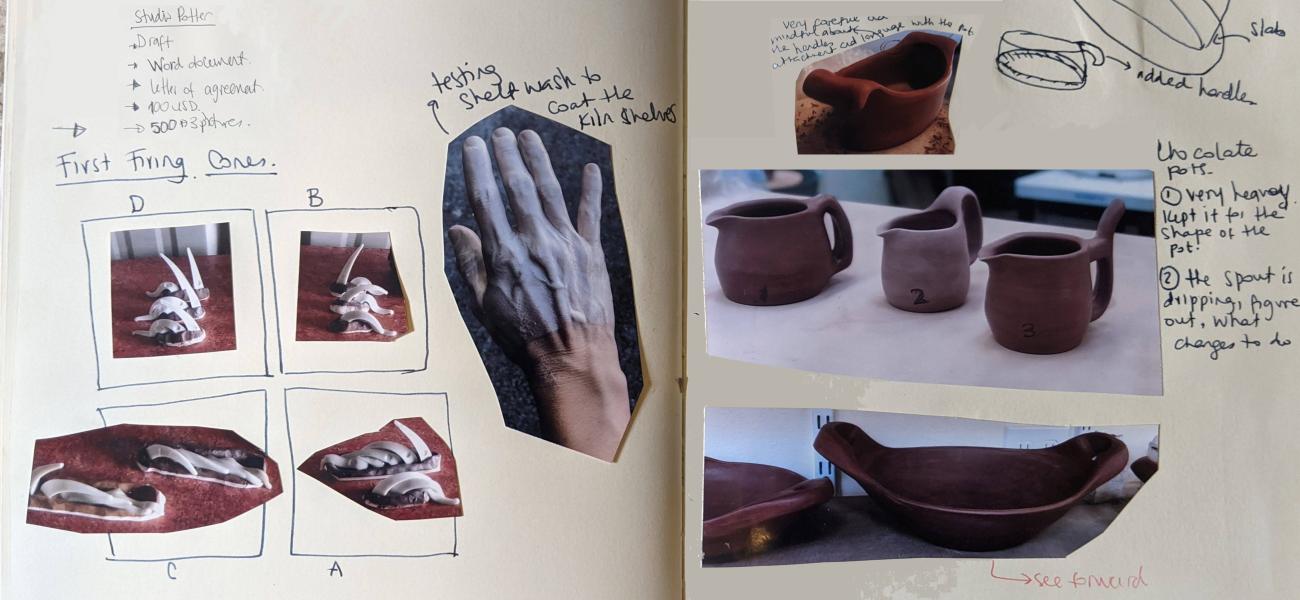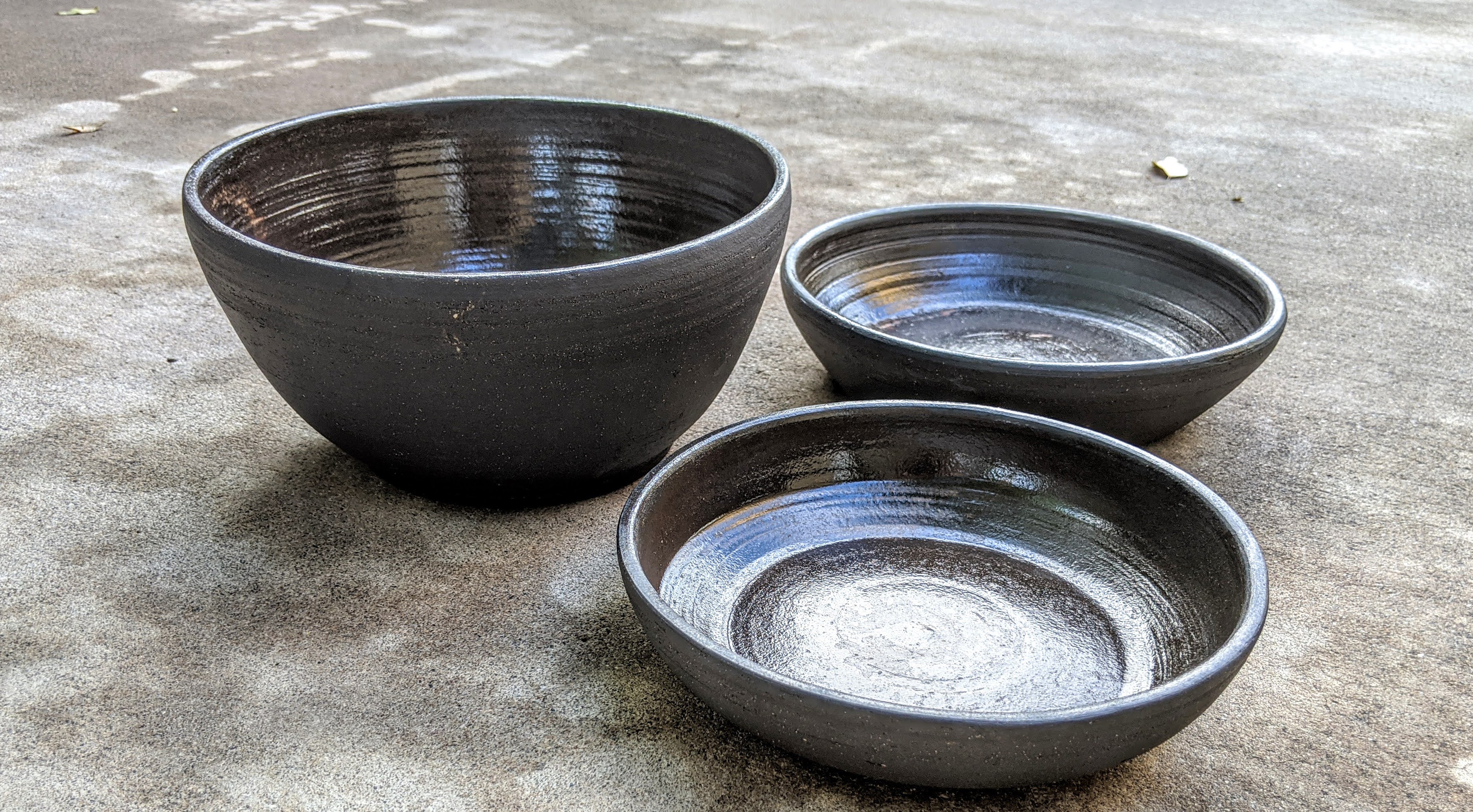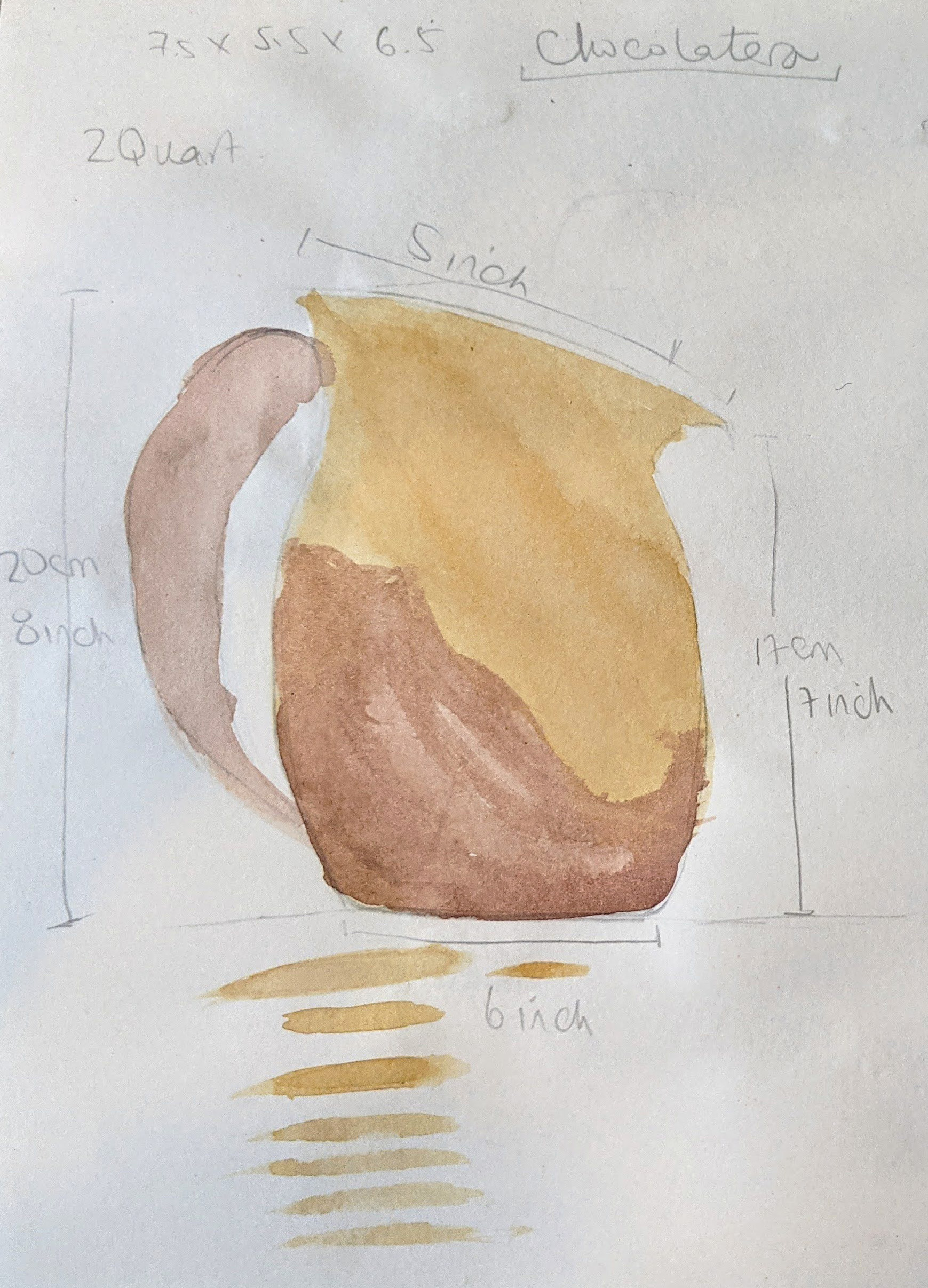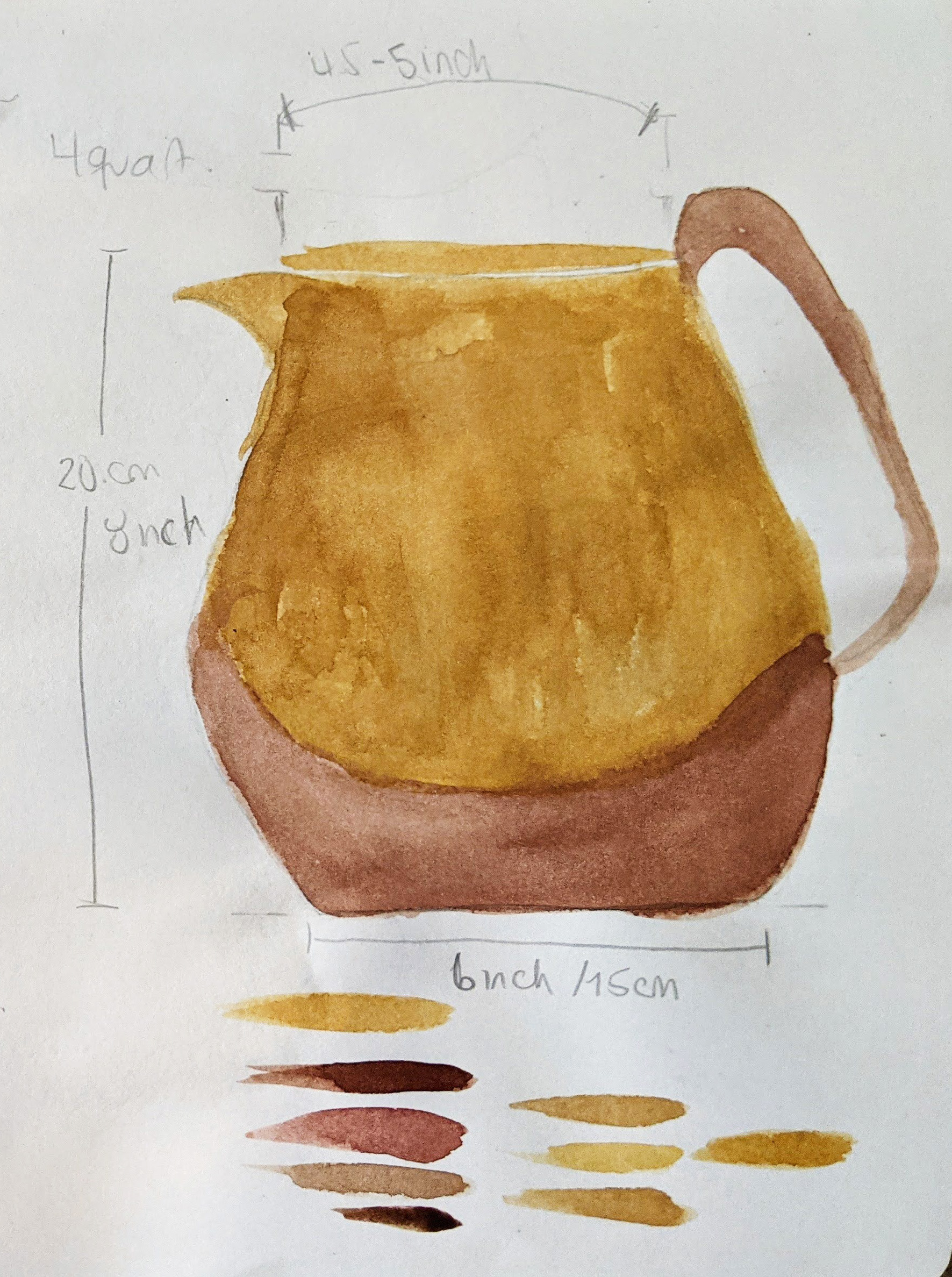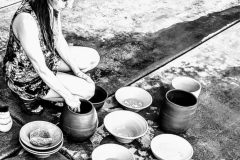From the Journal of an Apprentice
November 2021
It has been ten months since I started my apprenticeship with Robbie Lobell, but the journey to apprenticeship has been changing my life well before I arrived at Whidbey Island.
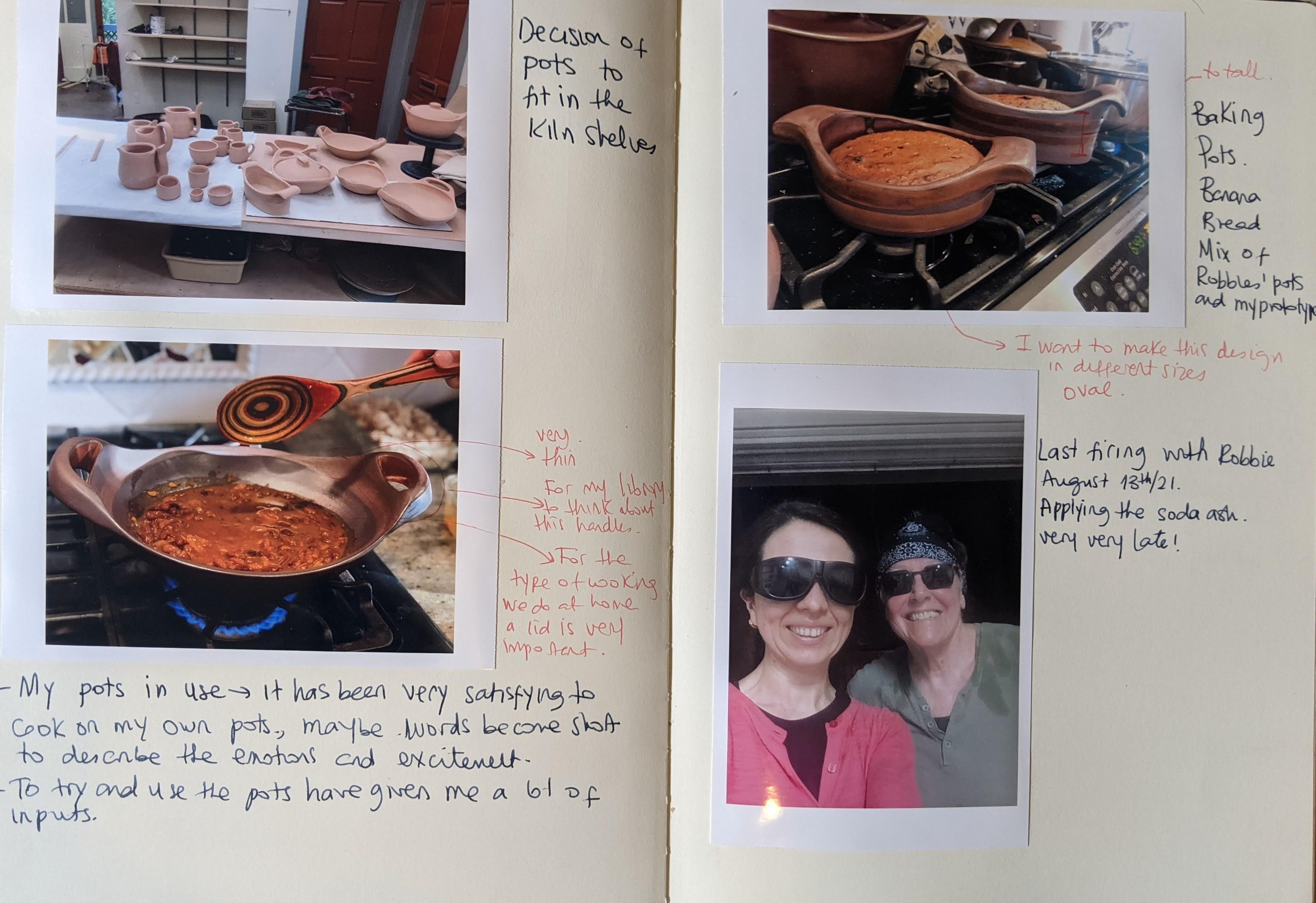
2013
I started off as a consultant and now have transitioned to strategy manager for my family’s construction company. While challenging, it has also been satisfying to work alongside my dad and learn from him. Together, we have grown the company that will be his legacy. It is his life’s work.
The experience gave me personal and professional skills, assets for the journey that lay ahead.
2014
An inner voice has always been whispering to me to give my interest in art a chance. The voice reminds me of my dream: “Someday I’ll have my own brand, my own creations, and studio.”
To quietly nurture the artist within I go to Expo Artesanias in Bogota, Colombia, where some of the best local and international craft is showcased. Seeing people who have chosen craft as a life path makes me believe I can too.
Every time the inner voice urges the artist in me to explore, another internal voice, motivated by my upbringing, counters: “You have already chosen a career and being an artist isn’t for you.”
As the eldest of my siblings, my father has been a big influence in my professional life. He founded his company with his brother over forty years ago. Working hard to succeed in business is my father’s way of loving and providing for his family. This work ethic and commitment is a familial trait. Since my late teens, I have been encouraged to attend courses in family business with an expectation that I will become part of family business. I feel I must follow the path laid out for me.
When I look back, I remember expectations to get excellent grades, especially in science. Arts-related subjects were seen only as relaxation – never as a life path.

1997
My friends’ deep interest in music has led them to start a band. Their musical aspirations have inspired my inner voice. Music allows me to connect with my creative side, and I have chosen the violin, focusing on classical music. The idea of studying music beyond high school seems like a possibility because of my teacher’s affirmations; but uncertainty is prevailing. My father tells me I should study for a career that can help me make a living – art can always be a hobby.
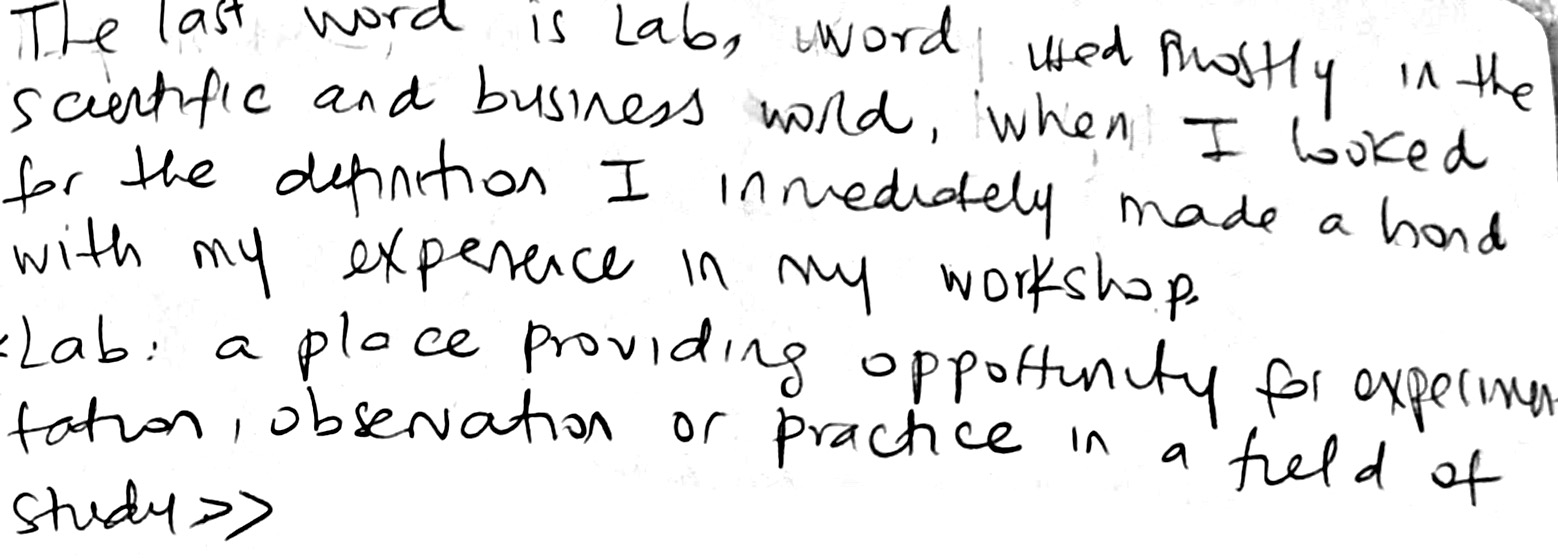
June 2001
Always good with math, I have been accepted to an undergraduate program in industrial engineering. I feel a persistent unease with my career choice so I take art courses whenever time allows. Pottery, photography, and philosophy nurture the creative part of my soul and keep my artistic curiosity alive.
October 2015
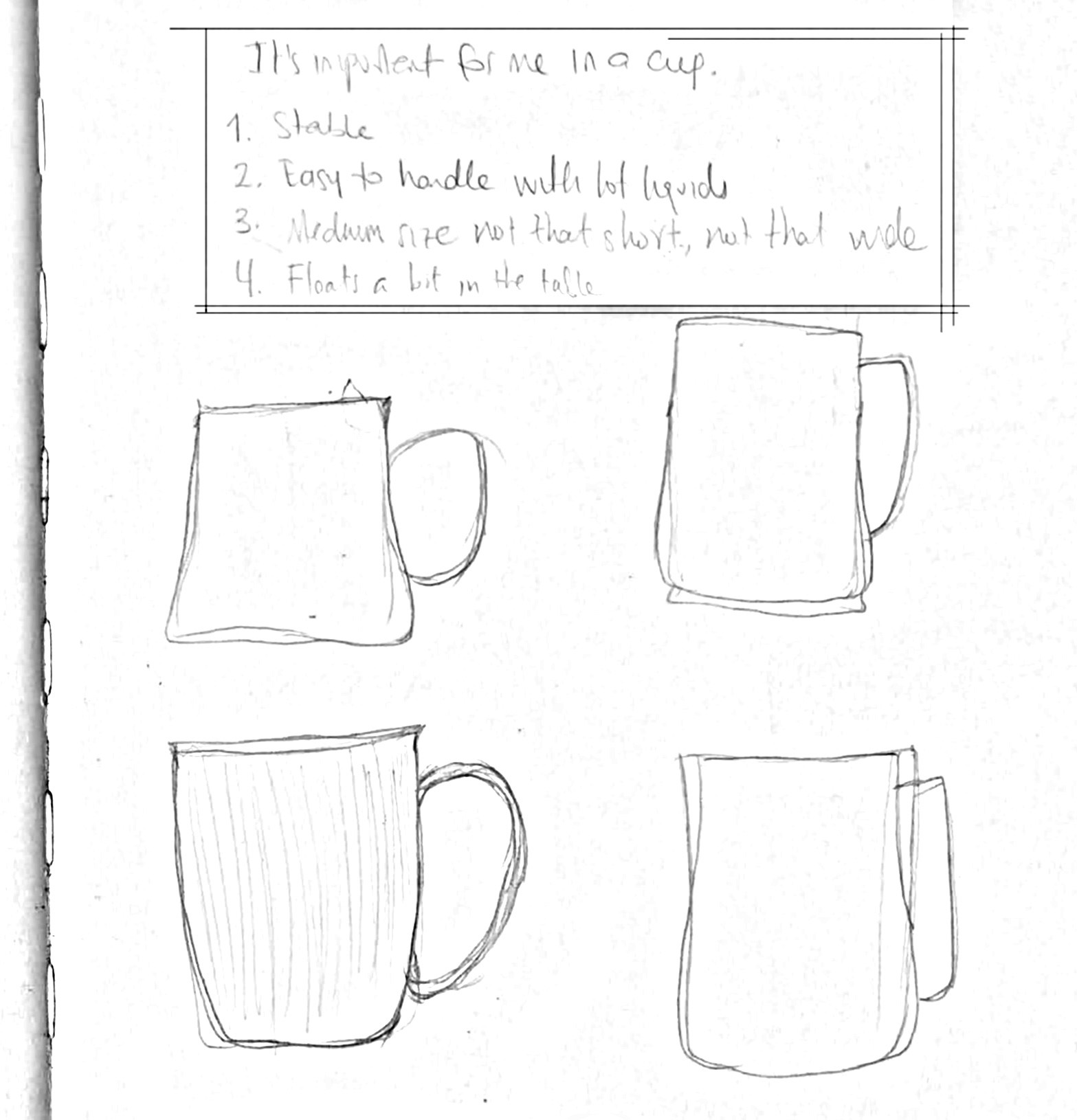 More than a decade has passed since university. I am deeply entrenched in our family business. I saw an event advertised where participants could learn to make a teacup. While pinching clay into a teacup I felt the connection with clay awaken. My inner voice is more insistent. A seed to explore clay and pottery has been re-planted, and I started taking regular Saturday classes. I find myself at a wheel again, more than fourteen years since college. I don’t want to stop. Working on a wheel is a way to center my thoughts and feelings and be free of everything else going on around me. The seed is growing. I am increasing the time I spend each week in the studio, learning more about clay.
More than a decade has passed since university. I am deeply entrenched in our family business. I saw an event advertised where participants could learn to make a teacup. While pinching clay into a teacup I felt the connection with clay awaken. My inner voice is more insistent. A seed to explore clay and pottery has been re-planted, and I started taking regular Saturday classes. I find myself at a wheel again, more than fourteen years since college. I don’t want to stop. Working on a wheel is a way to center my thoughts and feelings and be free of everything else going on around me. The seed is growing. I am increasing the time I spend each week in the studio, learning more about clay.
May 2019
I married and relocated to Phoenix, Arizona, where I joined an art class at Phoenix Center for the Arts. I also got a wheel and set up a garage studio to continue practicing and learning. I marvel at all the clay bodies I see in United States compared to what I have seen in Colombia. The variety of resources available are expanding the pottery world that existed in my mind. I enjoy learning and exploring every bit, but have narrowed down my choice of clay body to a dark brown, cone 6 clay. I want to use this clay without glazing the outside to create pieces with raw texture and color on the outside contrasted by a smooth surface with a one-color glaze on the inside.
January 2020
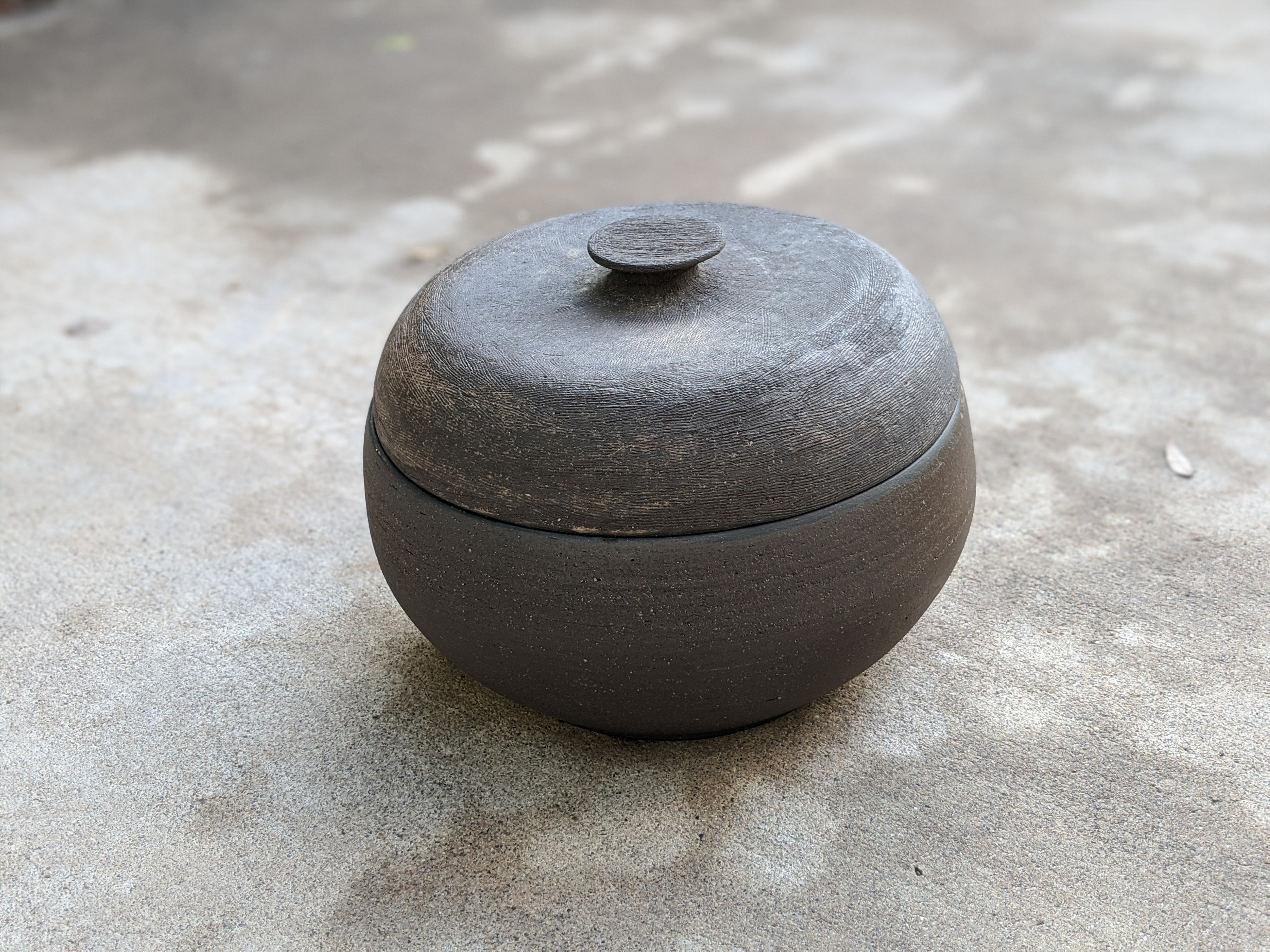 My classes have been cancelled due to COVID, but I keep working on my own and firing at a local business. The voice that kept me returning to art, is now fully in command. I want to learn more and have sought guidance from a professional. I am looking for options. I went to various studio tours to get to know local artists and perhaps find an apprenticeship. I am also considering an MFA in ceramics. I wrote to Professor Samuel Chung, who teaches at the Arizona State University. He met with me and kindly answered my questions. He helped me understand how an advanced degree is more focused toward the conceptual side of art and students who have pre-existing knowledge of the basics. This meeting clarified that I am looking for a path more focused on functional pottery with hands-on studio time.
My classes have been cancelled due to COVID, but I keep working on my own and firing at a local business. The voice that kept me returning to art, is now fully in command. I want to learn more and have sought guidance from a professional. I am looking for options. I went to various studio tours to get to know local artists and perhaps find an apprenticeship. I am also considering an MFA in ceramics. I wrote to Professor Samuel Chung, who teaches at the Arizona State University. He met with me and kindly answered my questions. He helped me understand how an advanced degree is more focused toward the conceptual side of art and students who have pre-existing knowledge of the basics. This meeting clarified that I am looking for a path more focused on functional pottery with hands-on studio time.
During my search, my skills continued to evolve.
February 2020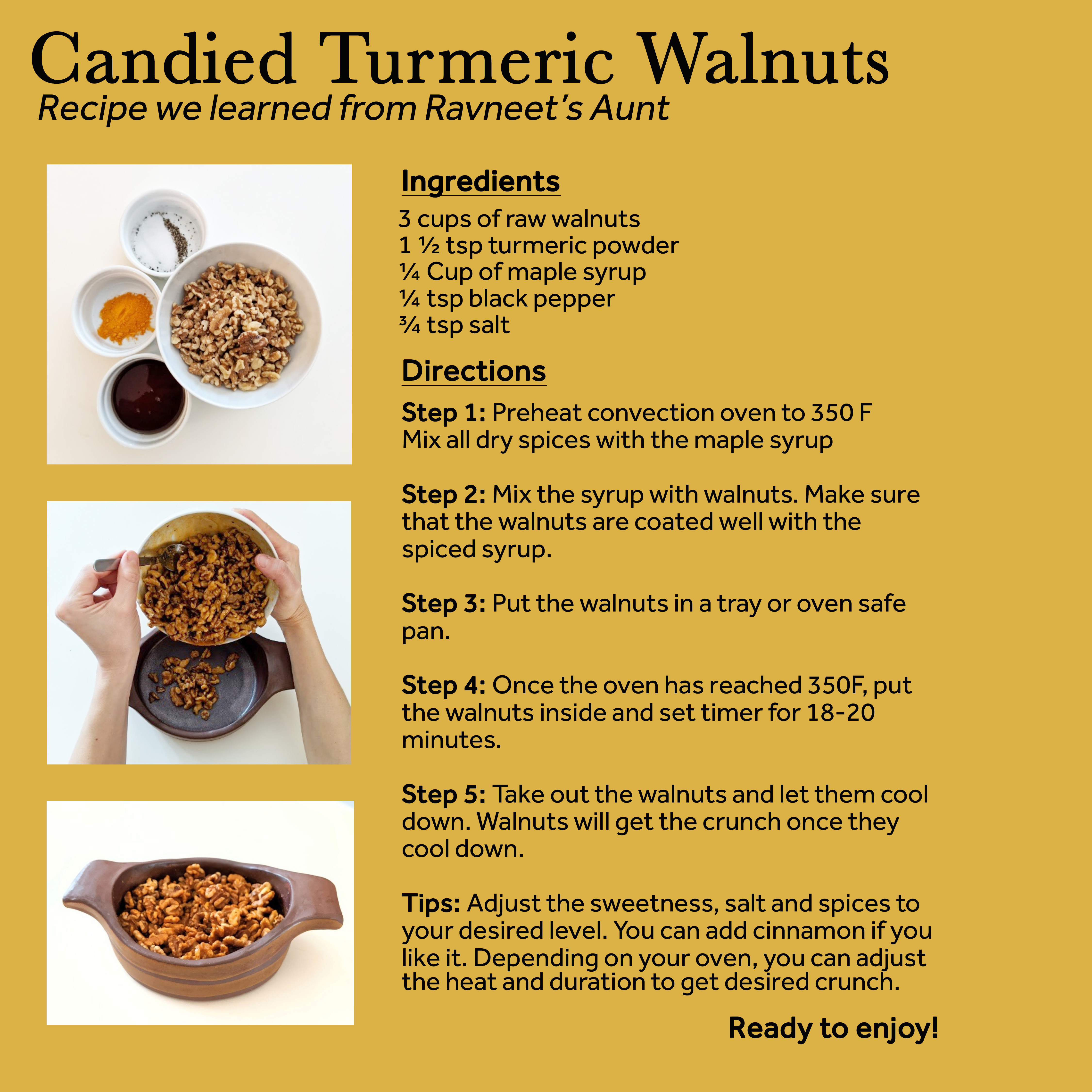
I am spending more time in the kitchen. Ravneet [my husband] and I enjoy connecting by experimenting with new recipes and ingredients. We come from two different culinary worlds. My Colombian roots deliver mild flavors, whereas his Indian roots bring a variety of spices and boldness that have helped me see cooking and serving food with a new perspective.
Our kitchen exchange has inspired me to think about dinnerware and pots to accentuate the amazing colors and ingredients Indian and Asian cooking use. In Colombia, there’s a clay body used specifically for cooking. The pots made of that clay are known as chamba pots. I recall my mother using chamba pots to cook and serve in ever since I was a kid. The memory has made me start searching for a clay body in the Unitd States that is especially used for cooking.
I found one article about Robbie Lobell on the Ceramic Arts Network describing her work with flameware. Another article, this one in Studio Potter and written by Lobell, clarified the technical understanding required to work with flameware. A local supplier has introduced me to a clay body called Toki, but the information available is limited.
Little did I know, life was about to open a serendipitous door that would further my flameware education with an apprenticeship.
December 2020
I am the Zakin Apprentice for Robbie Lobell! The transition to apprenticing with Robbie on Whidbey Island, a place neither Ravneet nor I had heard of (despite having visited Seattle before), was unimaginable. We were living a settled life in Phoenix. Relocating to another state was not something we had discussed; but in a culmination of unforeseen events, we decided to move to the Seattle area. As soon as the decision was final, I wrote Robbie to inquire about the apprenticeship program. Things started to flow like magic. I submitted my application and met with Robbie and her partner, Maryon Attwood, right after we arrived. The atmosphere was inviting. I took in the island, Robbie’s studio, and discussed details about the apprenticeship. We found a residence and have relocated to the island. The way events unfolded to make the dream of apprenticeship a reality has been surreal. Being an apprentice is something I have wished for since I lived in Colombia.
November 2021
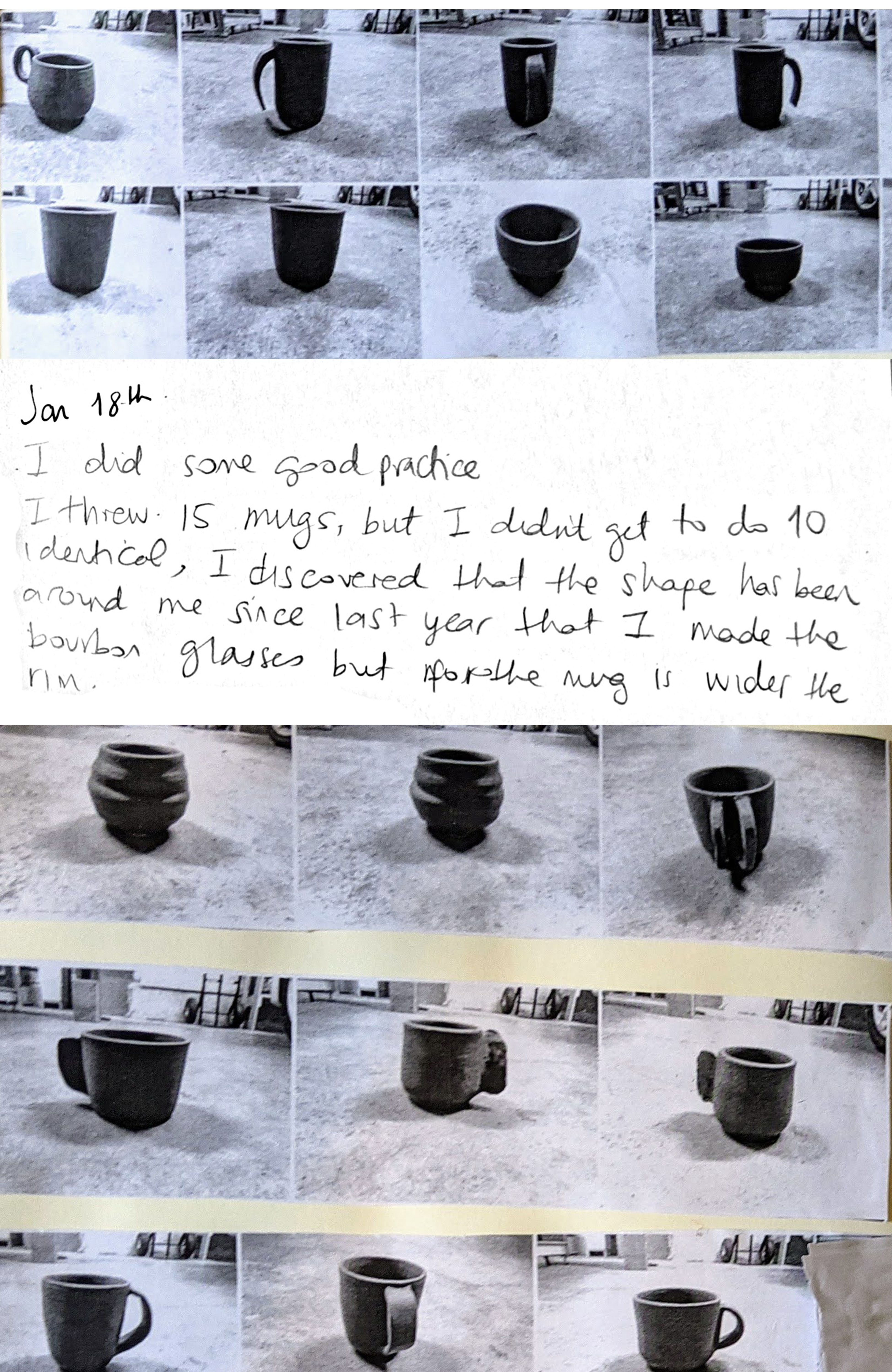
I have been an apprentice for over ten months now and during this time my life has been enriched with acquiring new skill and honing existing ones. Along with pottery skills, the apprenticeship experience has been a way to start defining a path to live life going forward.
I’ve been working as an apprentice while I continue in my job as a strategy manager. It has been challenging to question myself about making more room for the inner voice and to let go of my construction job – something instilled in me through my family and culture.
Over past few months I have been working with Robbie and Maryon for Cook on Clay, learning various aspects of running a studio – organizing the studio, getting ready for the next day, sweeping the floor, cleaning the studio, interacting with customers in the shop, among other things.
Working for Cook on Clay, I recall my first interaction with their huge soda kiln when we were getting it ready for the next firing. First, I was overwhelmed when I saw it. The sensation that followed? I felt amazed – at the size, the idea of seeing it fire, the huge gas tank it needs for fuel, and the chance I was going to have to interact with it. Preparation started with cleaning the shelves and coating them with kiln wash. Then we moved on to cleaning the posts and cleaning the kiln room, as well as the kiln. All these tasks help me understand the various components of working with an atmospheric kiln and take away the complexity.
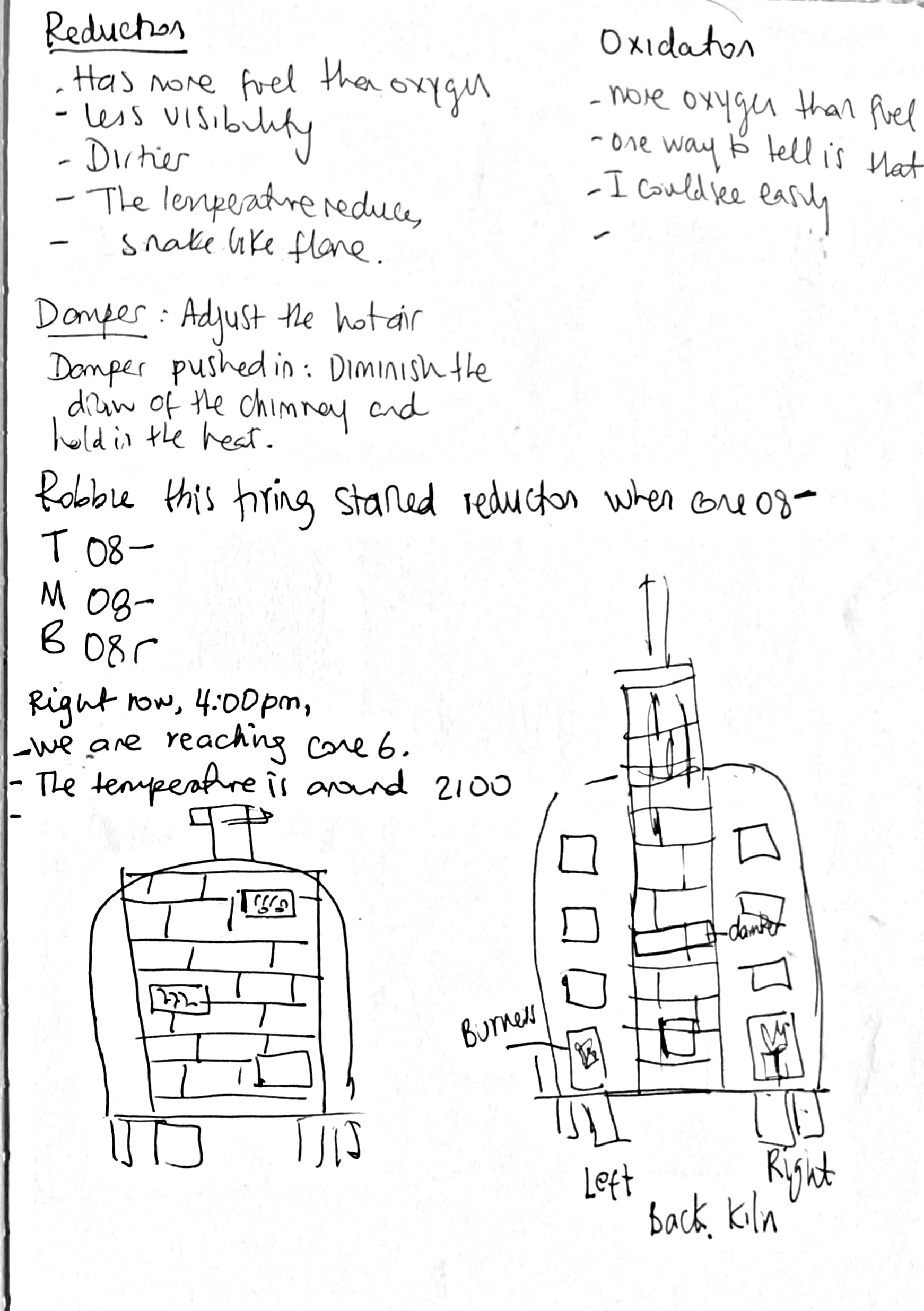 Only after I experienced assisting Robbie with the first firing did I better understand the importance of all the chores that seemed unimportant initially. The day of the firing started early in the morning and ended sixteen hours later. We had to wait three more days to open the kiln. While unloading the kiln, seeing the results of the firing, I could also see that anything (dust, not cleaning correctly the edges of the shelves, etc.) could damage the pots during the firing. All the tasks are equally as important as creating the pots. It made me understand that being a potter is attending to all the tasks beyond designing, throwing, and finishing.
Only after I experienced assisting Robbie with the first firing did I better understand the importance of all the chores that seemed unimportant initially. The day of the firing started early in the morning and ended sixteen hours later. We had to wait three more days to open the kiln. While unloading the kiln, seeing the results of the firing, I could also see that anything (dust, not cleaning correctly the edges of the shelves, etc.) could damage the pots during the firing. All the tasks are equally as important as creating the pots. It made me understand that being a potter is attending to all the tasks beyond designing, throwing, and finishing.
I relate to bigger machines, like cranes and other equipment used in the construction, but I have never operated them directly. In the studio there is a large hydraulic press, and I was amazed how Maryon operated the machine with confidence and patience. She connected to it as if it were another being. Every time I get more and more familiar with the hydraulic press, I am amazed how the process of making pots involves interdisciplinary knowledge and experience. Beyond the equipment used, the designing of the pots requires an understanding of intuition and science. With this apprenticeship I am learning to let go of the calculated engineering side of my brain, allowing intuition to bring freedom to my hands. This has become more possible because of time spent in the studio, but also because of a deepened understanding of Robbie’s advice. In the book, What Makes a Potter, Robbie said “When I got to these pots, I became even more interested in and able to develop further the vocabulary and ideas of edge, line. Those little, tiny details have been important to me. I want it to feel fat, to feel full. Full, full, full.” I think that reading this and listening to Robbie communicate the point during my apprenticeship has helped me understand the idea. But now I’ve fully internalized it through my experience of washing, sanding, and applying wax to her flameware cooking pots. I now understand that my hands have developed another sense. Now I can feel and communicate with the pots.
My interactions with Robbie have also given me new tools for my construction job. Being an apprentice has humbled me in understanding again what is to be a beginner, what it feels like to not know everything, to make mistakes and to learn from them. I see the apprenticeship is teaching me lessons that are helping me become a better human being.
Being part of Maryon and Robbie’s day-to-day has given me perspective about passion and dedication to a craft, the relationship with clay, and how their lives are in unity with that.
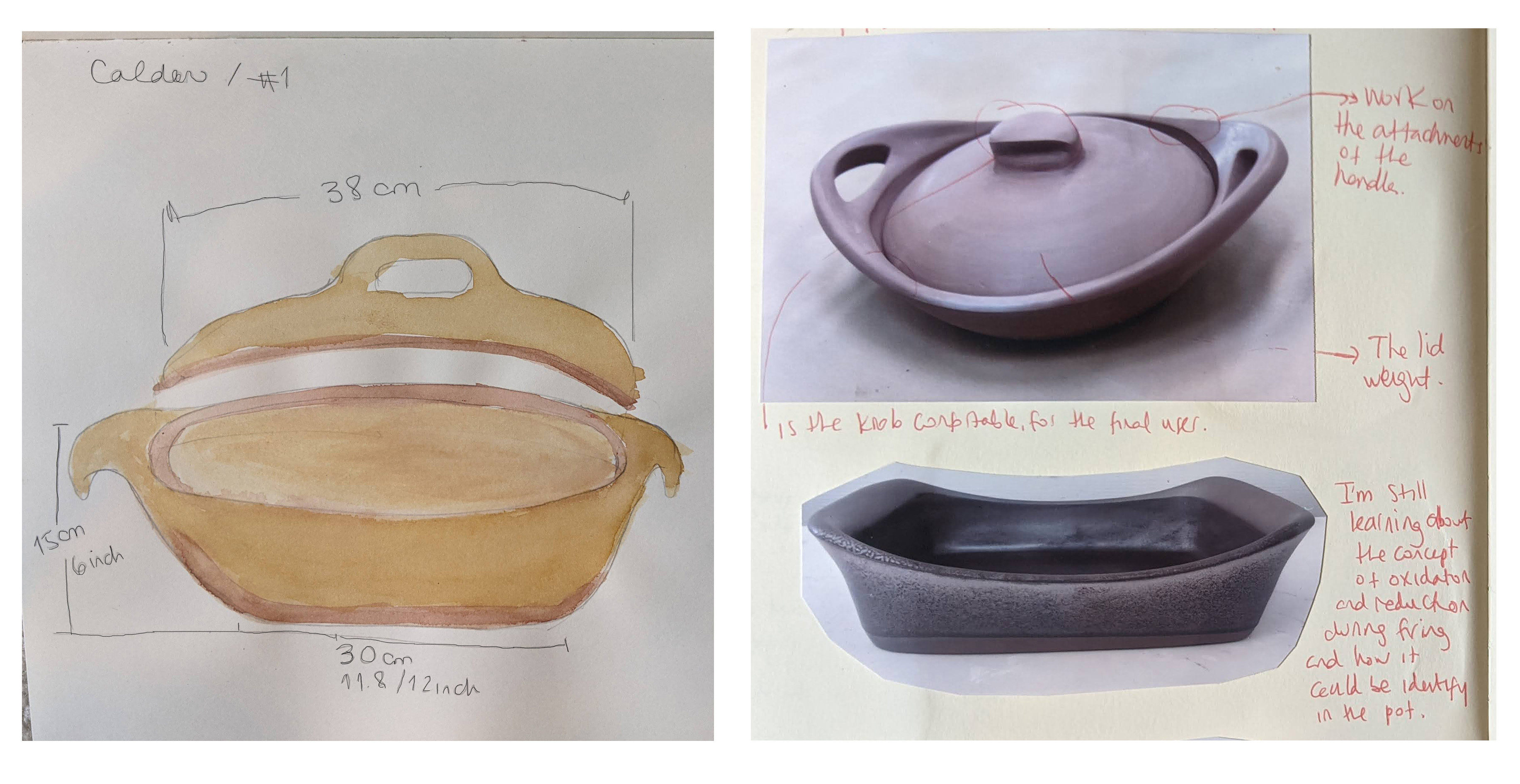
I feel a special connection to Robbie and Maryon. Despite the age difference between us, I feel our discussions, their wisdom, passion, and life experiences have also nurtured me as a woman. Robbie fully transitioned to being a potter around my age and, seeing her path, has become an inspiration for me to follow.
Every Thursday, we have a class with two more amazing women who have taken classes with Robbie for many years. When I see them throw with their own slow rhythm, I realize how fast I had been throwing. Observing them each week has furthered my sense of being mindful and connecting with clay. I have started questioning my methods and am rethinking my connection to the wheel. It is just a machine that helps me make my idea come through. Now I merge with tool and material and understand what is really happening. Now I connect through clay from a mindful place every time. I think these moments of sharing and observing have given me a sense of awareness and have allowed me to step out of the fast world I was coming from.
Robbie's mentorship is helping me develop my voice as a potter. I have come a long way from where I began; and my interest keeps growing. I am now building, as Robbie calls it, my library of seeds in the form of prototypes using flameware. Robbie has not only taught me through action – seeing her work and the way she moves with purpose in her studio – but also by offering resources like books, podcasts, and enriching my vocabulary in the field. Now that I look back, I know I found the experience I was looking for – to see and experience what it really feels to have a studio, to live like a potter.
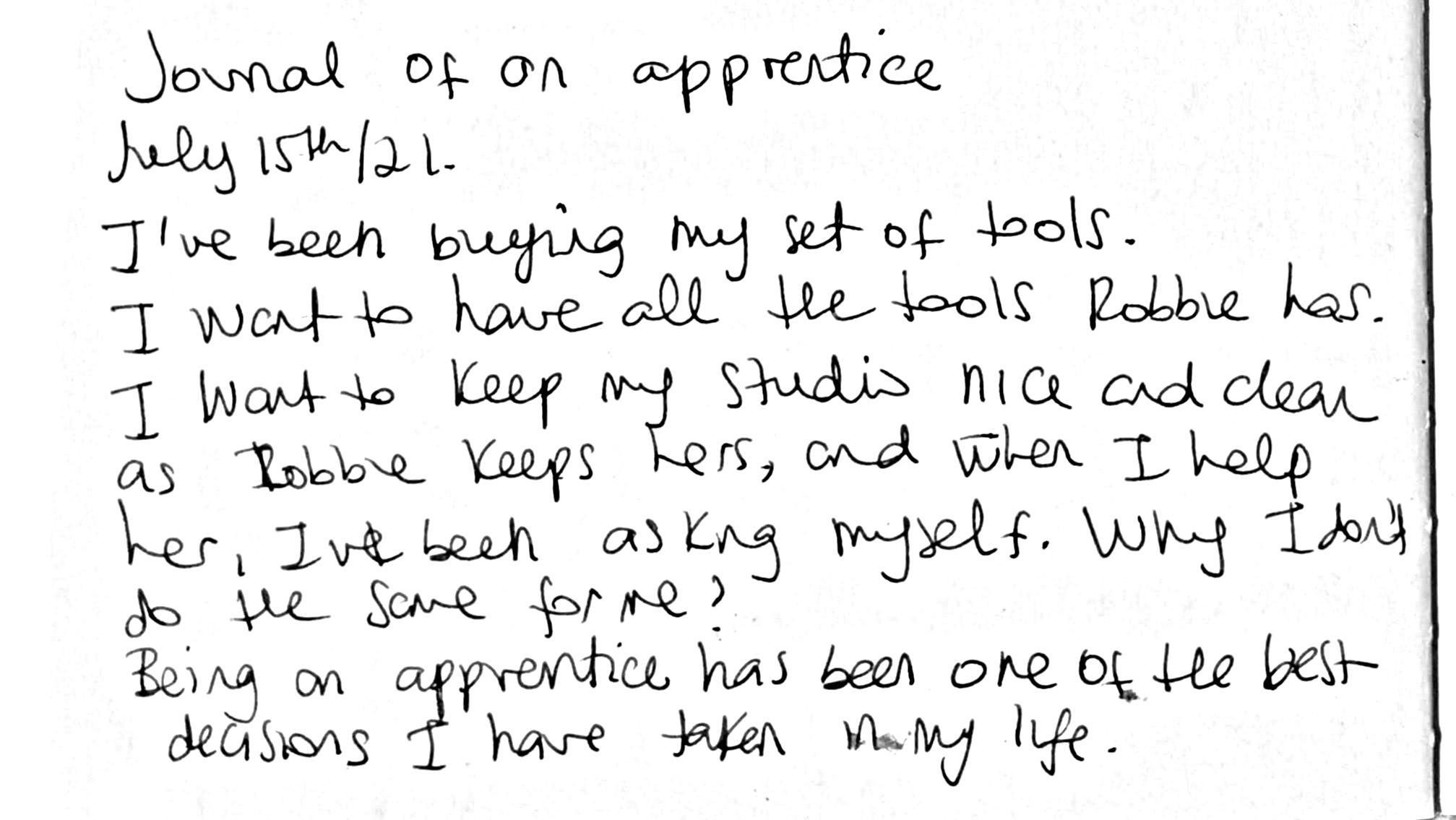
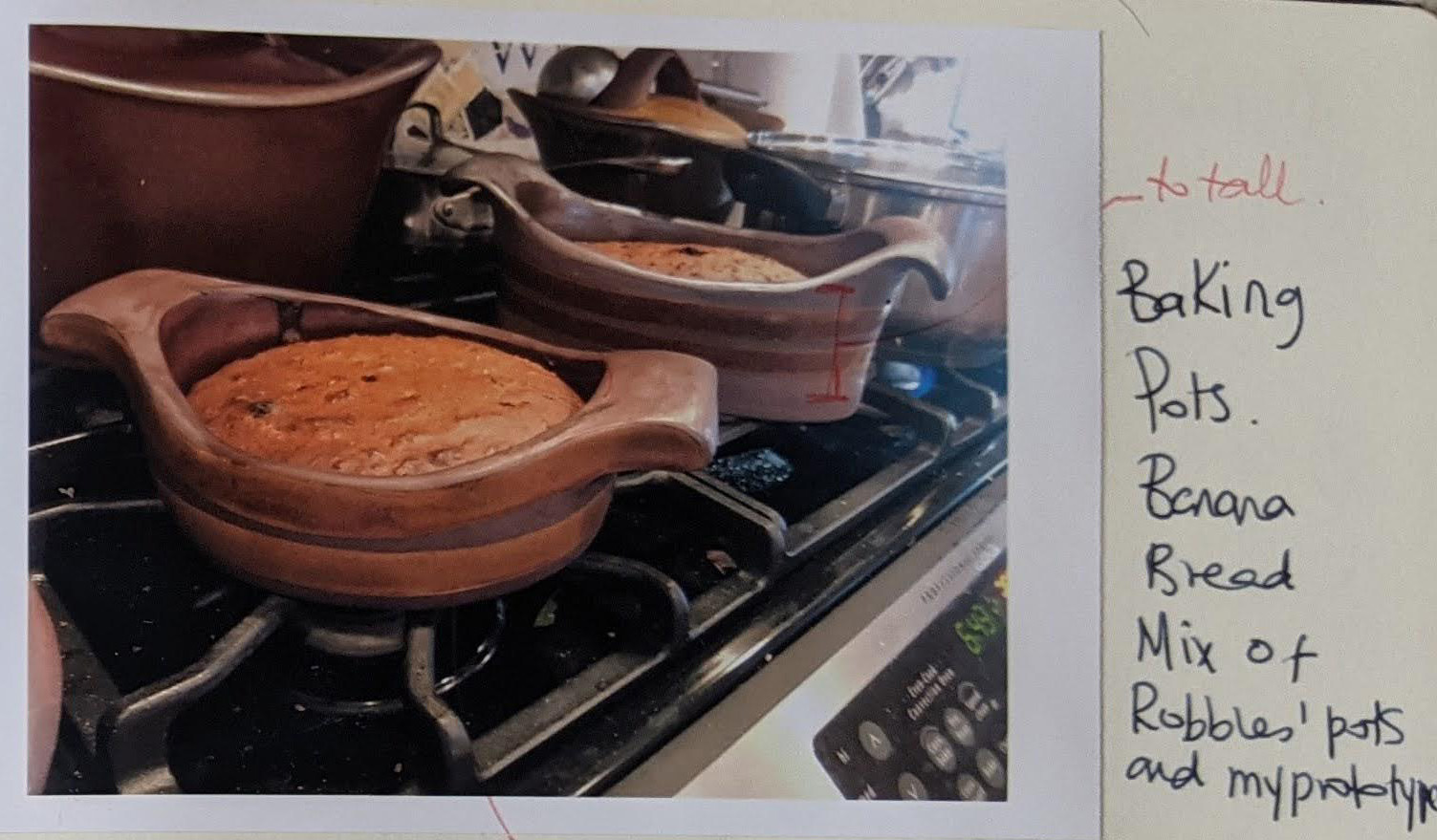
My dream and ideas from five years ago have manifested through this apprenticeship. Ideas we hold in our hearts become real.
2017
Learn and improve my skills further. Get guidance from a professional who has dedicated
his or her life to the craft.
Like Gary Hatcher said about visualization in a recent article I read in Studio Potter:
I remember in England, in a sketchbook I kept, I drew out the studio, and the house we were yet to create, along with equipment and things I felt we needed to create the work and have the lifestyle we wanted. All of those things have been manifested. As visual artists our visualization skills and efforts must be focused and refined. To create anything and materialize it, you must first visualize it, hold it in your mind's eye, and concentrate on it. I've done so many things like that. Within the Paramahansa Yogananda tradition that I follow, clarity of vision is emphasized. So, this seems like serendipity – that we bought this place and landed here – but it was all imagined first; we just didn't know the details of how it would unfold.
I feel the same as Gary, and while I continue to visualize having my studio and a community around it, I must continue the hard work in learning and taking action to find a place where I can teach and make pots that allow others to share meals together.
